You say you want a revolution?
I stepped off the airplane in Copenhagen, Denmark, and into a meeting about the Syrian resistance. Three activists using pseudonyms for fear of government reprisals told of three thousand civilians killed and many thousands detained in their quest to overthrow their government.
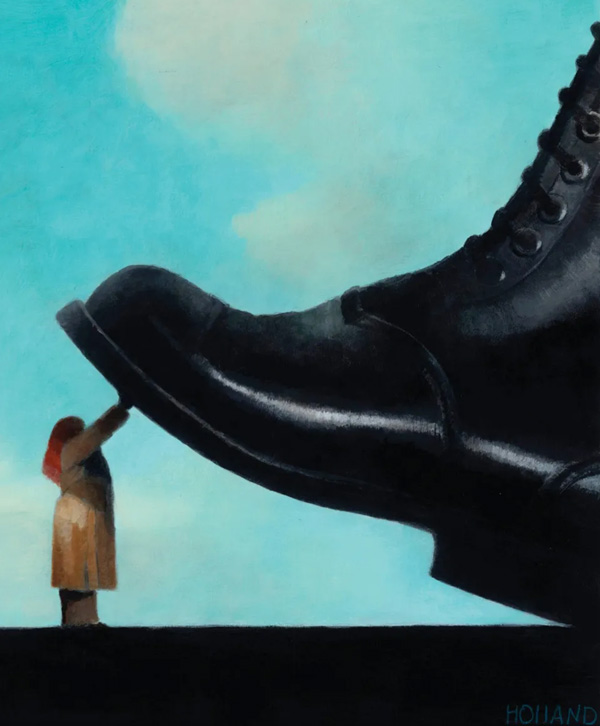
As the audience in the Danish Parliament — several hundred Danish government officials, journalists, activists, human rights workers and academics — listened, I could see the questions on their faces: Have the Syrians exhausted nonviolent methods? Is it time for them to take up arms?
The chair of the panel then asked for my view. I went to the podium, apologized for my obvious jetlag, and through an Arabic interpreter assured the activists that by refusing to use violence, they were on the right track — that active but peaceful methods were the best way to produce results. And I could even estimate their chances of success.
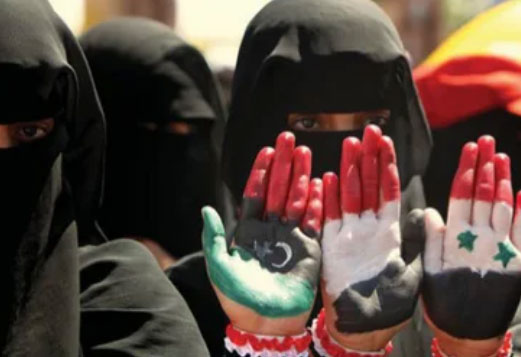
“If the Syrian uprising maintains nonviolent discipline and the regime’s security forces continued to defect, the chance that they will defeat Bashar al-Assad’s government — completely removing it from power — approaches 60 percent,” I said. “But if they turn to violence, their odds drop by half to 30 percent.”
When I made these claims in September, I could see audience members perk up, wondering how Danes could help Syrians defeat their tyrant. I stressed that the international community could offer moral support, but the real force for change would continue to be internal, civilian-led, nonviolent mass action.
At least one Syrian in the crowd was not convinced. A middle-aged exile based in Paris, he rejected the notion that nonviolent resistance alone could topple the Assad regime. He called for the “Libyanization” of the conflict — providing arms to Syrian civilians and military defectors while using international forces to neutralize Assad’s military. I insisted that, historically, armed insurgencies backed by foreign militaries had a worse track record than nonviolent resistance campaigns.
I insisted that, historically, armed insurgencies backed by foreign militaries had a worse track record than nonviolent resistance campaigns.
The man dismissed my comments in a way that needed no translation: “Naïve.”
I always thought I would spend my life trying to understand the causes and consequences of political violence. I was 9 years old when the Berlin Wall came down, and I remember watching news coverage of the 1989 revolutions sweeping across Eastern Europe with my family after we ate dinner in our cozy colonial home in a Dayton suburb.
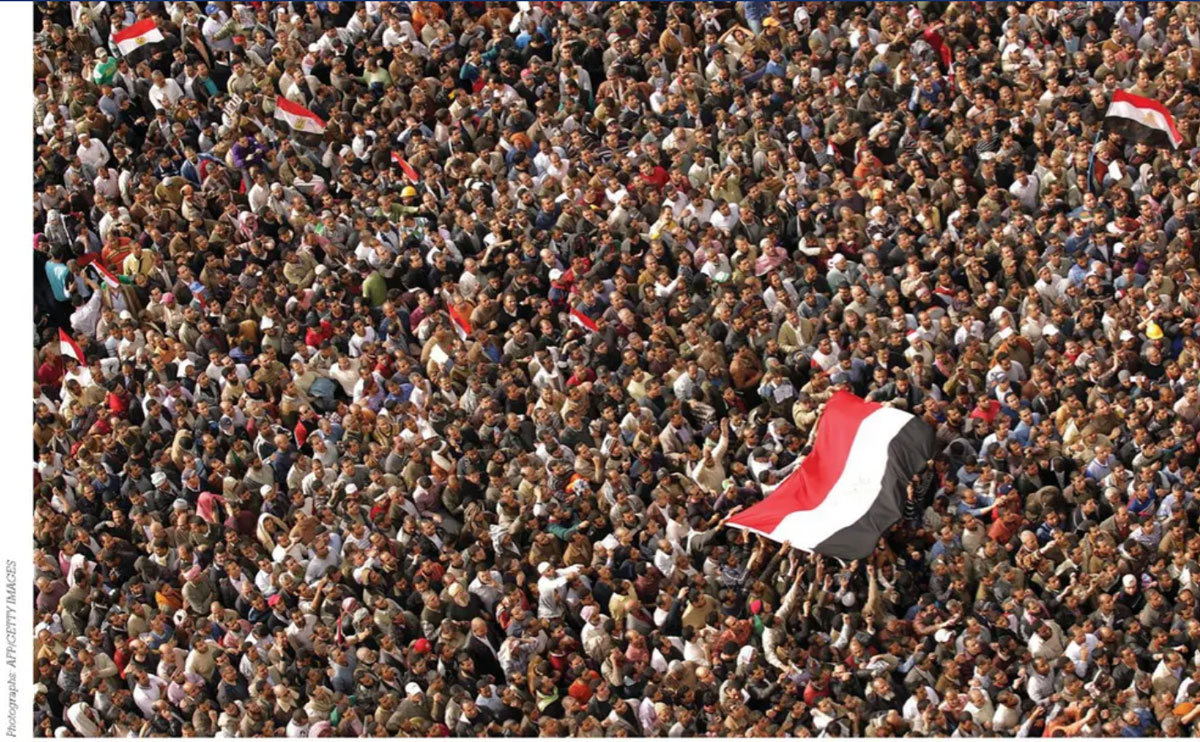
When I was 13 years old, my parents bought me Zlata’s Diary. Sometimes called “the Anne Frank of Sarajevo,” Zlata Filipovic was a Bosnian Serb who found fame at the age of 13 after a journalist published her personal accounts of the war in the Balkans. The wars that accompanied the breakup of Yugoslavia became a particular interest of mine, and the book had a profound impact on me. Zlata was my own age, yet I had never experienced the horror of a military siege, the violent deaths of my schoolmates or hunger, as Zlata had. Zlata’s Diary had a lot to do with my decision to commit my life to studying violent conflict. (Interestingly, decades later, I met and talked with Zlata about this at an event at Harvard University, where I was a fellow).
I spent much of my teenage years hunched over my desk, door closed, listening to the classical music of Dvorak or Vaughan Williams on a hand-me-down Discman as I devoured books on the wars of the 20th century — the First World War, the Russian Revolution, World War II, Vietnam and the Persian Gulf War. Movies and television reinforced the idea that political violence was something people used to gain and wield power.
By the time I came to UD, I knew that I wanted a career in international relations with an emphasis on security. I would study political violence, understand it, explain it and predict it. I reasoned that prediction allowed for some degree of control — the ability to anticipate or even prevent human suffering.
After 9/11, my interest shifted to why non-state actors, like terrorist groups or insurgent movements, used violence. During my first few years of graduate school at the University of Colorado, I focused on terrorism in weak and failed states — a product of the times. In my field, the early 2000s were dominated by policy debates about whether weak and failed states were truly incubators of terrorism, and whether using military intervention to impose democracy on such states would solve the problem. CNN and news wires fed me real-time accounts of the U.S. invasion of Iraq in 2003, and I gathered information about violent conflicts in the Middle East and Asia.
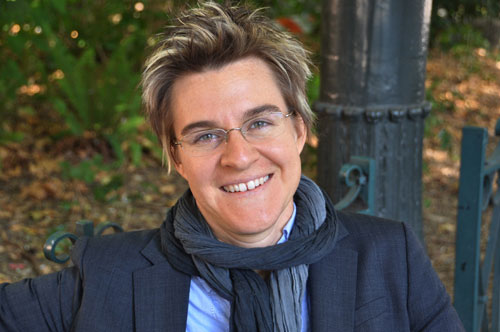
I developed interests in corruption, violent insurgency and government repression, and I learned how to use advanced statistical techniques to forecast such situations. I spent a lot of time getting into the minds of people on the “dark side” by speculating about which circumstances could lead me to use violence against others for political aims. This understanding would help me grasp the logics people used to justify violence.
I became skilled in making sense of it all. I settled on a rationalization that violence was purely instrumental — that people used it for good reasons, usually because it was the only way to achieve their goals or express their grievances. I came to believe that in many situations, violence worked. I thought of it in purely strategic terms, and I remained agnostic about its morality.
Basically, there were three major assumptions underlying my worldview. First, violence was effective. Otherwise, why would anyone use it? Second, violence was always a last resort, chosen after other methods had failed. That means that wherever people were using violence, it was probably the only way for them to resist. Third, if there were other options, such as nonviolent protest, people would have been using those options all along. But because nonviolence was weak and generally ineffective, violence was necessary.
I developed a reputation as an influential scholar on terrorism and international security. I enjoyed being one of a few young women with such a specialty. In a field dominated by men, there was some novelty in being a female scholar who wasn’t shocked by even the most horrendous atrocities, like Al Qaeda’s strategy of killing Iraqi children and filling their corpses with mines that would detonate and kill others who found the bodies.
I became desensitized to violence, comfortable with it. The world I lived in was a scary place, but for the time being, I saw it as reality.
In June of 2006, “people power” came into my life and shifted this reality. I was finishing my doctoral thesis on why terrorist groups tend to emerge in democracies when a colleague sent me an announcement about a conference at Colorado College. “The other side of the coin … might be interesting,” he wrote in an email.
It would completely alter my views on violence.
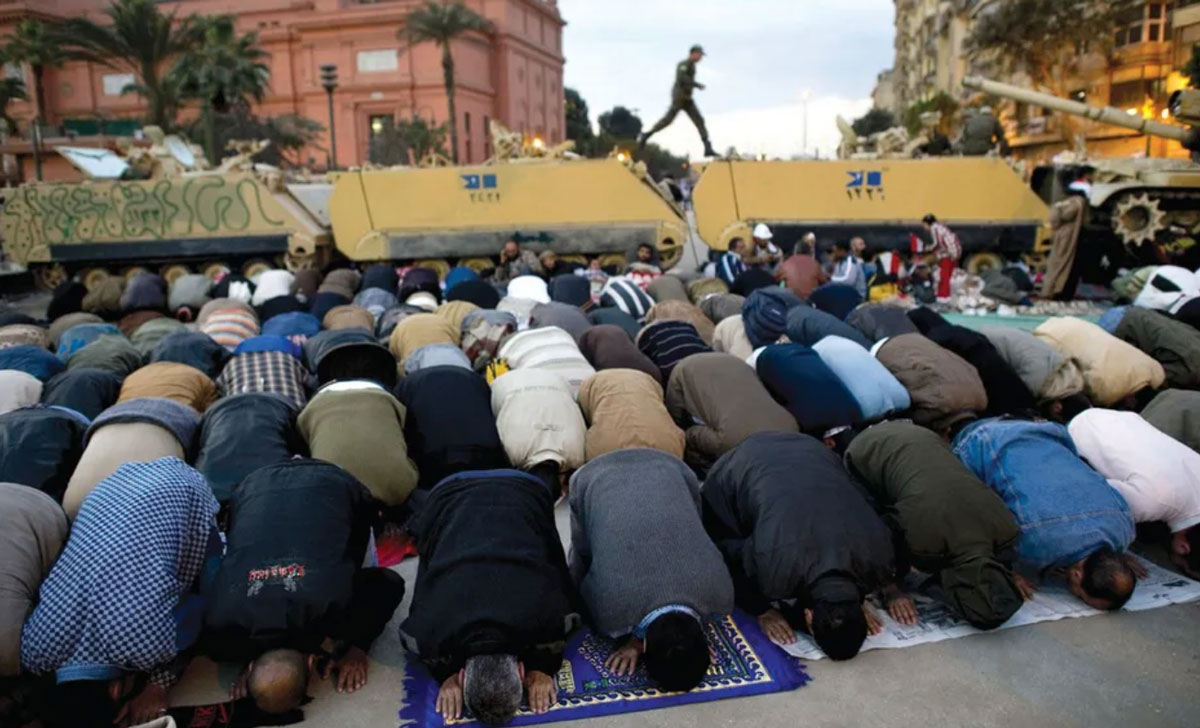
The workshop was on the subject of civil resistance — a method of conflict in which unarmed civilians employ nonviolent actions like protests, strikes, boycotts, stay-aways and demonstrations to challenge entrenched power. Given my area of expertise, I was skeptical about incorporating the topic into the courses I was teaching. There was no room, I thought, to cover a feel-good topic in the midst of all of the really important material about violence.
But in preparation for the workshop, I did the required reading — books and articles by Gene Sharp, Peter Ackerman and Jack DuVall, Stephen Zunes, Kurt Schock, and other scholars and practitioners of nonviolent resistance. The works generally argued that people could use a wide variety of nonviolent methods to change their circumstances and their institutions, even under the direst of conditions. They cited examples — the anti-apartheid campaign in South Africa, the anti-Milosevic campaign in Serbia and the Solidarity movement in Poland. I had several recurring thoughts: “This is naïve,” “Nonviolent resistance can’t work in very oppressive countries” and “Violence is what makes the world go around.”
Yet I was very curious. During one of the workshop’s coffee breaks, I scribbled a research design onto a scrap of paper. I shared it with Maria Stephan, then the director of educational initiatives at the International Center on Nonviolent Conflict, who had helped organize the conference.
I would not be convinced of the power of nonviolent conflict without hard empirical evidence, but I was willing to undertake the research.
A few weeks later, ICNC agreed to support the study. After spending a year collecting, refining, documenting, checking, double-checking and cleaning the data, I had created a database that comprised over 300 major nonviolent and violent mass movements for regime change, self-determination and secession since 1900. I accounted for factors like the brutality of the regime, the nature of the political system, support from allies, and the size and location of each country. I had also accounted for features of the campaigns themselves, including the number of participants, the ability to provoke defections from security forces, international support, and the campaign’s goals and duration. The list of nonviolent campaigns was diverse, ranging from Gandhi’s Indian Independence campaign from 1919-1947 to the Chinese pro-democracy campaign (which failed notoriously in Tiananmen Square in 1989) to the East Timorese independence movement (which succeeded in 2000).
I remained skeptical until I began to analyze the data. The results were breathtaking.
The nonviolent campaigns were more than twice as effective as the violent ones. Moreover, the success rates of nonviolent campaigns had increased over time, whereas violent insurgencies had become less effective during the last 20 years.
These results held up even when the nonviolent campaigns were facing brutal authoritarian regimes that responded with violent crackdowns. Nonviolent resistance was succeeding in some countries — the Philippines, Serbia, Poland, Thailand, Nepal, South Africa and Chile — where violent resistance had failed utterly. And perhaps most importantly, the countries that experienced nonviolent uprisings were much more likely to transition to democracies and much less likely to experience a relapse into civil war compared with countries facing violent insurgencies. Contrary to everything I had previously thought, mass civil resistance — not violence — was the force creating change in the world.
As I sat in a puffy chair in a coffee shop in Berkeley, Calif., I took a deep breath and thought, “This changes everything.” No more could I assure myself that violence was a necessary evil in the world. Instead, the research showed that violence was ineffective. Even against really nasty regimes, nonviolent resistance was a real alternative. And that meant there is no real excuse for using violent insurgency.
I called Maria, who was equally stunned by the results, and we resolved to write a book explaining why civil resistance has been so effective as a force for change in the world.
The copyedits of Why Civil Resistance Works had just gone to press when, in January 2011, people throughout the Arab world began to challenge authoritarian rulers by using civil resistance. There were breathtaking victories: Jan. 14, Ben Ali fell in Tunisia, followed by Egypt’s Hosni Mubarak in February. The regimes collapsed in exactly the way our book discussed: nonviolent mass movements had broadened their participation enough to create relationships with security forces, and when the orders came down to suppress the movements, the security forces had refused to obey.
When the orders came down to suppress the movements, the security forces had refused to obey.
All of a sudden, my email inbox began to fill with questions from the press, from the government, from other academics. They wanted to know what was going on, how these regimes came apart in the face of nonviolent resistance and whether such resistance could succeed in Saudi Arabia, Iran, Bahrain, Oman and elsewhere. I was glad that I had answers that were grounded in empirical fact rather than speculation.
Libya — where a couple of days of uncoordinated nonviolent protest quickly escalated to violent rebellion — was a particularly troubling case. In March, The New York Times asked me to write an op-ed on whether violence was the best way for Libya’s rebels to overthrow Moammar Gadhafi. Incorporating data on Libya’s own unique characteristics, I had estimated that the violent revolution had less than a 20 percent chance of removing or overthrowing Gadhafi, compared with about 50 percent if the revolution had remained nonviolent. (Ultimately, the rebels came close to defeat until the international community intervened to support them — at a high cost in human suffering.) Whether the coming years bring stability or civil war remains to be seen, but my statistical model predicts that Libya’s chance of becoming a democracy within the next five years is less than 10 percent.
After the Times published the piece, I was sitting in Wesleyan’s faculty lounge having lunch with a colleague, one of the world’s leading experts on Syria. I asked him whether he thought nonviolent resistance would catch on there. He shook his head and said, “There is no way this thing is going to spread to Syria. No way.”
Only days later, it did.
Today, I spend most of my time relating the remarkable record of nonviolent resistance to American and foreign government agencies, international organizations, scholars, activists, nongovernmental organization workers, journalists and others, explaining the strategic dynamics of nonviolence. The work puts me in contact with ordinary people who are trying to use their natural skills and talents to cast off circumstances they find intolerable. I have tried to give encouragement to those using civil resistance in places like Syria, India, Zimbabwe, Mexico, the Philippines, the Palestinian Territories and the United States — and I have tried to give pause to those contemplating using violence.
I recently returned from Asia, where several experts and I presented material on civil resistance in a four-day workshop with Chinese human rights workers. I presented my research on the historical record of nonviolent resistance and on the potential for civil resistance to change even the most stubborn political systems.
The participants sat silent during the workshop, unused to speaking freely. But during the last session, one of the quietest participants, a young woman, picked up a microphone. She said with great sincerity that she lived in daily fear. Her job was to help people who have been oppressed — often putting her in direct opposition to the Chinese government — and she was terrified by the disappearances of friends and colleagues who had done similar work. But then she said that after hearing about the success of nonviolent resistance elsewhere, her fear was subsiding.
She realized that she was not alone, and that there were millions of people around the world working for change in their societies. She said she could be a force for positive reform in her country and that the impossible now seemed possible.
I have been surprised by how much this research gives hope to others. No matter where in the world the audience is, whether Syria, China or elsewhere, people always initially dismiss the idea of civil resistance as naïve. I understand. I have come a long way myself in overcoming skepticism, and I do not live in oppressive conditions, as do many of the people with whom I now work. It is both humbling and satisfying to watch fear evaporate as people begin to realize their potential. I feel that I learn more from their courage and experience than they could ever learn from me. T
his is why research is only part of the story today. I once thought that by mastering the study of violence, I could help avoid conflicts in our world, and that this would help reduce suffering. I am no longer so naïve. Today I know that conflict is inevitable, but it need not weaken or destroy societies. When people empower themselves, refuse to submit to oppression and engage in civil resistance, conflict can be a constructive force for change in our world.
Erica Chenoweth ’02, who majored in political science and German, is an assistant professor of government at Wesleyan University and director of Wesleyan’s Program on Terrorism and Insurgency Research, which she established in 2008. She is currently on sabbatical in California, where she is a visiting scholar at UC-Berkeley and a visiting assistant professor at Stanford University. While her research takes her around the world, she can always be found on the blog “Rational Insurgent” and on Twitter @EricaChenoweth.
<CONTINUED CONVERSATIONS>
Unarmed Insurrections by Kurt Schock